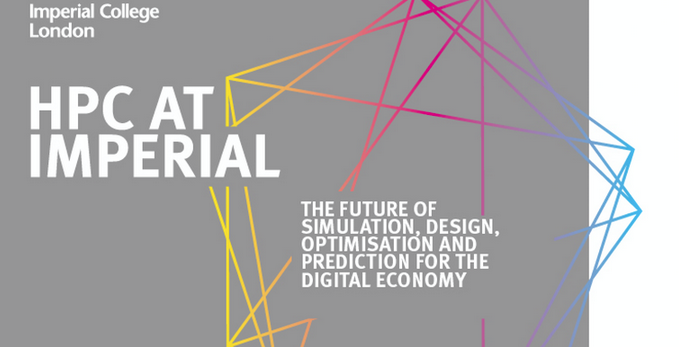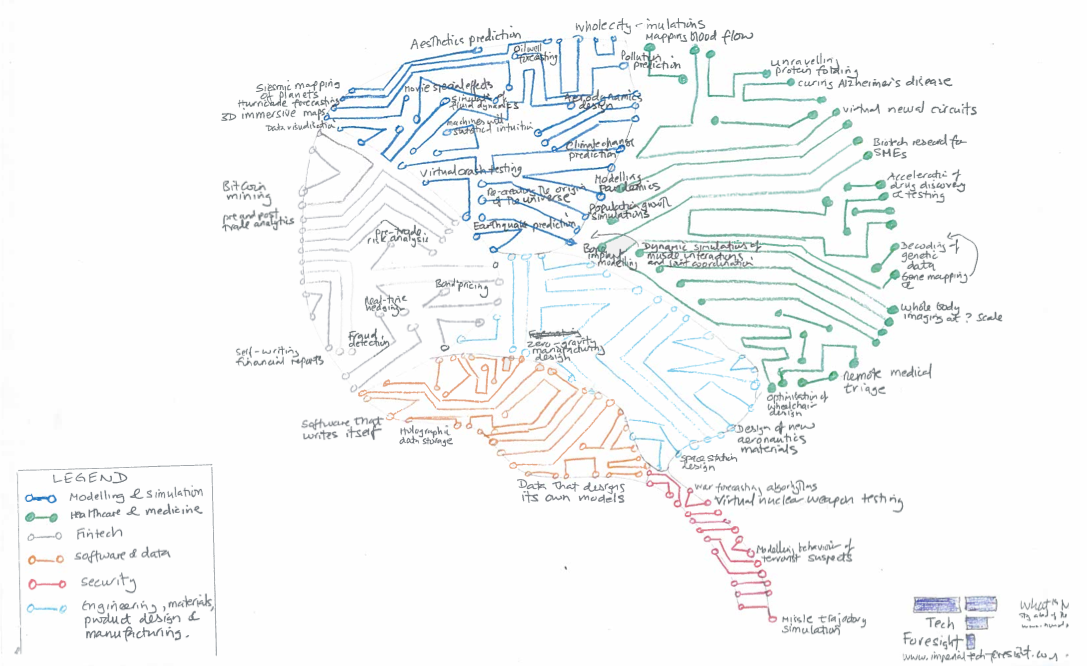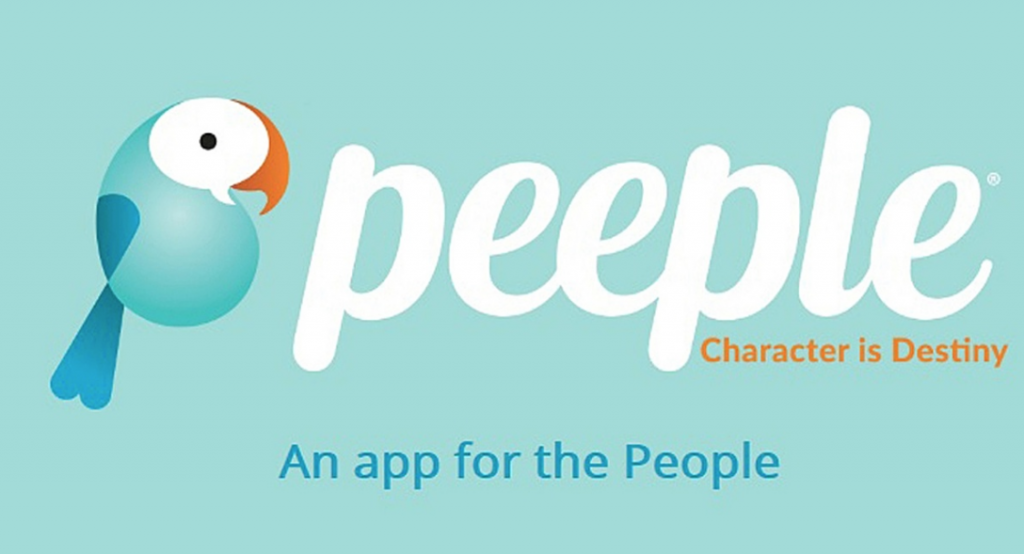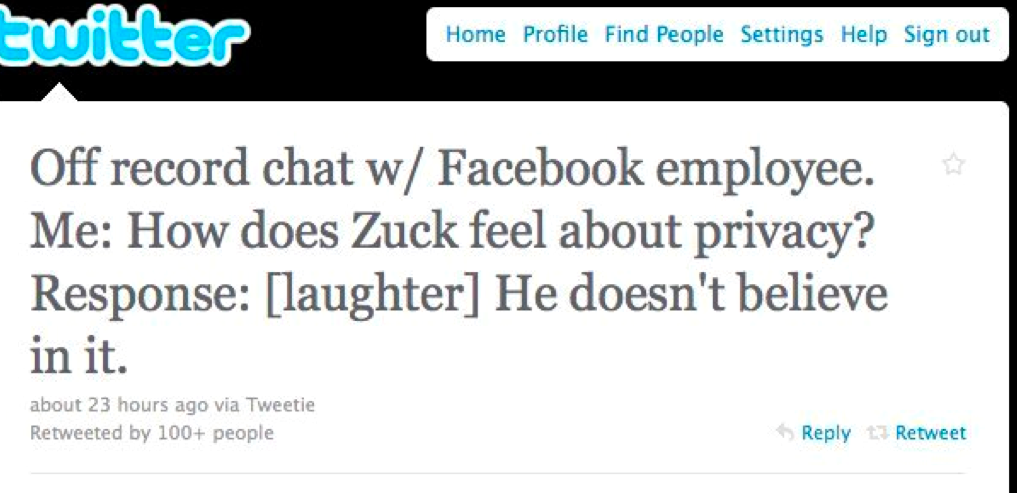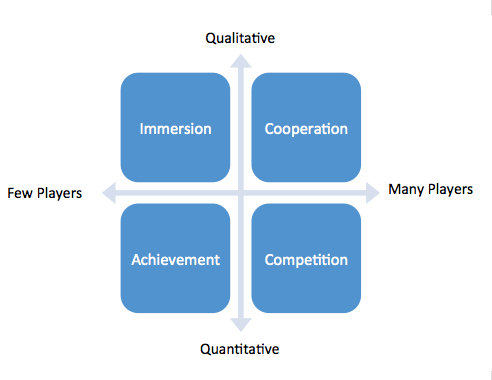According to a 2017 interview with Kevin Murphy, Earth Science Data Systems Program Executive at NASA, the biggest challenge now is not going where no man has gone before, but managing the data.
Murphy states that as of 2016, 12.1TB of data stream in from observation posts and sensors on terra firma as well as out in space on a daily basis and is projected to increase to 24TB per day as better tools come to the fore. In addition, the archives already contain 24PB (petabyte = 1,000TB) of data, projected to grow to 150PB by 2023. Within these data streams is information that has significant importance in the earth sciences, space exploration, and potential resources and threats.
Category Archives: Big Data
The Future of High Performance Computing
Just FYI, anyone that’s interested in HPC, super-computing, advanced modelling & simulation, problems, prediction, cyber-security and any associated field might be interested in this. It’s on Thursday 23 February in London. Event link here.
Beginning of a new Current & Future uses of HPC map below….
Current & Future Applications of HPC
Modelling & Simulation
Preventing the invention of unnecessary
Prediction of technology breakthroughs
Modelling specific species against climate change
Dynamic longevity prediction
Predicting M&A activity/hostile takeovers
Lifelike recreation of dead actors in movies
Volcano modelling
Real time national mood modelling
Hyper-local personal weather forecasts
Complete human brain simulations
Prediction of social unrest using global social media feeds
Finding holes in existing research
Finding new knowledge in Big Data
Automation of scientific research
Radiation shield modelling
Molecular dynamics modelling
Space weather forecasting
Trawling scientific data to find genetically applicable treatments
Molecular dynamics forecasting
Automation of scientific research
Aesthetics prediction
Seismic mapping of planets
Hurricane forecasting
Modelling of tornado trajectory & speed
Galaxy simulations
Oil well forecasting
Movie special effects
Simulation of fluid dynamics
Virtual crash testing
Re-creation of the origin of the universe
Earthquake prediction
Population growth simulations
Climate change modelling
Aerodynamics design
Whole city simulations
Pollution forecasting
Radiation shield modelling
Molecular dynamics modelling
Modelling impacts of bio-diversity loss
Power grid simulation & testing
Modelling of organizational behaviour
Optimization of citywide traffic flows
Emergency room simulation
Major incident modelling & simulation
Space weather forecasting
Healthcare & Medicine
Dynamic real-time individual longevity forecasts
Mapping blood flow
Prediction of strokes, brain injury & vascular brain disease
Pandemic modelling
Unravelling protein folding
Curing Alzheimer’s disease
Virtual neural circuits
Bio-tech research for SMEs
Acceleration of drug discovery & testing
Decoding of genetic data
Whole body imaging at scale
Remote medical triage
Foreign aid & disaster relief allocation
Dynamic simulations of muscle & joint interactions
Bone implant modelling
Modelling of the nervous system
Longevity prediction at birth
Design of super efficient water filters
Fintech
Pre-trade risk analysis
Bond pricing
Real-time hedging
Fraud detection
Self-writing financial reports
Automatic regulatory control & compliance
Pre and post-trade analysis
Dynamic allocation of government tax revenues
News prediction
Flash crash prediction
Optimisation of investment strategies
Automated hiring & firing of employees
Automated due diligence for M&A
Whole economy simulation
Software & data
Software that writes itself
Holographic data storage
Coding for ultra-low energy use
Data that generates its own models
Engineering, materials & manufacturing
Space station design
Space colony design
Design of new aeronautics materials
Zero gravity manufacturing & design
Predicting properties of undiscovered materials
Design of smart cities
Identification of redundant assets
Optimization of just in time manufacturing
Optimization of crowd-sourced delivery networks
Design of ‘impossible’ buildings & structures
Security
Recording of every individual human conversation on earth
Modelling of factors likely to lead to a revolution
Deliberate cyber-facilitation of revolutions
Breaking 512-bit encryption ciphers
War forecasting algorhythms
Virtual nuclear weapon testing
Modelling behaviour of terrorist suspects
Crime prediction down to individual streets
Identification of terrorist suspects
Forecasting of geo-political upheavals
Hyper-realistic war gaming
Simulation of large scale cyber attacks
Missile trajectory simulation
Screening of data from multiple spectra & media in real time
Threat detection
Crisis management decision support
Note: This is just me going off on a bit of a jazz riff at the moment. All subject to change!
Peeple. Be afraid. Be very afraid….
What would happen if everyone you ever met, everyone who ever knew you, everyone you ever worked with and everyone you ever slept with rated you and your performance? This future isn’t far off. Should we embrace this or should we reject it? Seriously, what happens in a world where everything and everyone is measured and the data openly published? (I don’t know, I’m just asking the question).
As for Peeple above, I’m convinced this is clever PR for a new movie, but I hope I’m wrong). Be afraid people, very afraid. Some interesting articles here, here and here.
The Future of Privacy
We are currently living in the Technolithic, an age that forms part of the most significant revolution since the agricultural and industrial eras. The Technolithic is part of the information age, but what we are now creating is perhaps not what the early internet pioneers envisaged. In the early days, the internet was about finding information. It is currently largely about finding other people. One day, I hope, it will be about finding ourselves.
But before this can happen we have to deal with a very powerful force, a force that wants to know absolutely everything about us. This force can act for the common good, but can also operate to profit the few.
Who we are and what we are allowed to be, is at the very heart of this. Please don’t get me wrong. I am not calling on you to smash your computers or stop using LinkedIn. All I am asking you to do is to raise your gaze from your freshly picked Apples and Blackberries and to pay closer attention to some of the possible consequences of using these devices, especially the way in which machines and the people that control them appear to be profiting from something that not only belongs to us but defines us.
Digital connectivity has given us many wonderful things and improved our lives immeasurably. At the moment the balance is positive, but that doesn’t mean that we shouldn’t remain vigilant.
I was in Poland last year doing a TEDx talk and met one of the developers behind an app called Life Circle. This is an app that makes blood donation more effective by opening up the communication lines between blood banks and blood donors. This might sound mundane, but it isn’t. It’s a matter of life in death in some instances. Simply allowing a blood centre to have a users smartphone number means that they can see where their donors are in near real time.
This allows the blood bank to call in certain blood groups if there’s an emergency. It can work anywhere – from Warsaw to Washington – and users can link with social networks and potentially recruit more donors. Moreover, once linked you could potentially ‘game’ blood donation, although the idea of competing with others to see who can give the most blood would obviously be a very bad idea.
Another medical marvel is Google Flu Trends. If you don’t know about it already, it’s an early example of Big Data and near real-time prediction. The story is that some people had a feeling that there must be a correlation between outbreaks of flu in particular regions and search terms used in the same locations. If one could predict the right words you could catch an outbreak sooner.
200,000 people are hospitalised annually in the US alone due to flu and between 20,000 and 30,000 die, but until recently it took the Centre for Disease Control around a week to publish flu data.
The Big Data connection here, by the way, is that Google did not know which handful of search terms would correlate, so it just ran half a billion calculations to find out, and it turned out that 45 search terms were indeed related. What is going on here, and is starting to occur elsewhere too, is that rather than sampling small data sets we are able to look at huge amounts of data, sometimes at all the data in near-real-time, which can reveal correlations that were previously deeply hidden or totally unobservable.
In other words, many aspects of our daily existence that were previously closed, hidden or private are becoming much more open, transparent and public and much of this data has huge value and forms a wholly new asset class.
The website 23andme.com recently got into trouble in the US with the FDA because it was thought by some that the site, and the results of the tests that were being offered, was carrying too much weight and users were acting in ways that were not necessarily in their best interests. In other words, users were seeing probabilities or predictions as certainties.
Again, if you don’t know about this, the site essentially offers to quickly sequence your genome for around $99. A decade or so ago, this would have cost you around a billion dollars. The results might strongly suggest, for example, that a 25-year-old man would have issues with his heart when he was in his 50s or that a 15-year old girl had a significant chance of developing breast cancer.
There are clearly privacy issues galore around new technologies such as these – should your new employer have access to information that you are 70% certain to die in 20 years for example?
Another, more mundane, example of companies looking at people and predicting future outcomes is McDonald’s. They, along with many other fast food chains in the US, have started to use technology to predict what you are about to order – and start to prepare your meal before you have actually ordered anything.
How and why do they do this? In the US about 50% of fast food turnover is through the drive-thru window and customers can become stressed if the queue moves too slowly. CCTV cameras are therefore pointed at cars in the queue and these cameras are connected to software that works out what each car is, not based on individual number plates, but on the silhouette of each car.
This knowledge is then married to millions of bits of historical data about what the drivers of such cars tend to order and, hey presto, predictive sales and marketing. The general idea, I guess, is that if you are driving a 10-year-old Volvo station wagon you’ve probably got a mother and at least one happy meal coming up, whereas if you can see a brand new Hummer you are not about to sell a small salad and a bottle of water.
Is McDonald’s technology intrusive? Does it invade privacy? I don’t think so. If they are stealing anything it isn’t anything of great value. Moreover, you can mess with their minds by riding a bicycle into the drive-thru and ordering two Big Macs and three cokes.
There are many other examples of machines attempting to know us and predict our behaviour. One is called the Malicious Intent Detector and it’s used primarily in airports in the US. This machine also uses cameras connected to software.
The idea here is that body-language can tell us quite a lot about what people are thinking or, more usefully, what they are thinking of doing. Our facial expressions, our eye movements, our clothes, what we are doing with our hands all betray certain things about us.
Indeed as much as 90% of communication is believed to be non-verbal. Combine this thought with skin temperature analysis (sensed remotely), facial recognition, x-rays and software that looks at how our clothes are fitting and you have a fairly good way of finding out whether someone is carrying something they shouldn’t or is intent on doing something that they shouldn’t.
But we can take things further still. Predictive policing is a direct result of better data and better analysis of crime figures. What it is able to do, with astonishing accuracy, is predict not only where, but when crime will take place. If this sounds like the Department of Future Crime in the film Minority Report that’s more or less the idea. It doesn’t identify criminals directly, but does pinpoint potential targets down to 150 square metres on specific days in some cases.
But that’s just the beginning potentially. If one adds developments in remote brain reading we could possibly have a situation where even our inner thoughts are intercepted. The asymmetry of this situation – and indeed of Big Data generally – shifts the balance of power between the state and the individual so we should keep a careful watch on this.
I’ve had my Identity stolen twice, but the benefits of digital transactions still outweigh any negatives. However, if someone were to steal not only my date of birth, address and bank account details, but everything about me, I’d view this rather differently.
Let’s put it like this. If someone came up to you on the street and asked you for personal information would you give it to them? And what if they asked about your daily schedule, your friends, your work, your favourite shops, restaurants and holiday spots?
How about if they wanted to know which books you read, what kinds of meals you like, how much sleep you get and what you searched for online in the privacy of your own home? Would you find that a little unsettling? Would you at least ask why this person wanted this information? And what if they said that they wanted to sell this information, your information, onto someone else that you’d never met. Would you allow it?
This is essentially what’s going on right now with social networks, although I believe it’s about to get far worse. Part of the problem is the mobile phone, although the word ‘phone’ is rather misleading. After all, using a phone to speak to someone is dying out globally. Voice traffic is falling through the floor, while text based communication is going through the roof.
These phones, and there are more than 6 billion + of them now, are broadcasting information about us all of the time, especially if they are smart phones, which increasingly they are. In fact smart phones have been outselling PCs globally since about 2012. In the UK, almost 10% of five year olds now own a mobile phone and by ten-years-of-age, it’s 75%. Eventually, all of these will be smart phones.
Our mobile phones are actually a form of wearable computing and I’d expect wearables to explode over the coming years. I don’t simply mean more people owning more phones, but more people carrying devices that continually broadcast information about us, and this would includes clothing embedded with computers, shoes containing computers, digital wallets and even toothbrushes containing computers. This is broadly the internet of things and it where the problems will really start.
An internet connected toothbrush might seem trivial, ridiculous even, but trust me they are coming. To begin with they will be seen as expensive toys. You’ll be able to download your brushing history or compete with your friends in various dental games. They will form part of the self-tracking or quantified-self movement and will be bought alongside Nike Fuel bands and sleep monitors.
Nothing wrong with this unless your toothbrush data finds its way into the wrong hands. For example, what if dental care was to be refused – or made vastly more expensive – if you had not reached level 3 of the tooth fairy game?
Currently there are roughly 12 billion things connected by the internet. By 2045 some people think this number will be 7 trillion. This means computers and wireless connectivity in every man-made object on earth and a few natural objects too.
Trees with their own IP address? It’s totally possible. And don’t forget that we put ID chips in our cats and dogs so its probably only a matter of time before we start chipping our children too.
Anyway, the point here is that almost everything we do and almost everything we own in the future, will emit data and this data will be very valuable to someone. I rather hope that this someone is us and that we can opt in and out at will, earning micro-payments for the data relating to our activities if that’s what we want.
And this brings me to why privacy is one of the biggest problems in our new electronic age. At the heart of Internet culture is a force that wants to find out everything about you. And once it has found out everything about you and 7 billion others, that’s a remarkable asset, and other people will be tempted to trade and do commerce with that asset.
Does this matter?
I think it matters for three key reasons.
First, people can be harmed if there is no restriction on access to personal information. Medical records, psychological tests, school records, financial details, sites visited on the internet all hold intimate details of a person’s life and the public revelation or sharing of such information can leave a person vulnerable to abuse.
Second, privacy is fundamental to human identity. Personal information is, on one level, the basis of the person. To lose control of one’s personal information is in some measure to lose control of one’s life and one’s dignity. Without some degree of privacy, for example, friendship, intimacy and trust are all lost or, at the very least, meaningless.
Third, and most importantly of all perhaps, privacy is linked to freedom, especially the freedom to think and act as we like so long as our activities do not harm others.
If individuals know that their actions and inclinations are constantly being observed, commented upon and potentially criticized, they will find it much harder to do things that deviate from accepted norms. There does not even have to be an explicit threat. Visibility itself is a powerful way of enforcing norms.
This, to some extent, is what’s starting to happening already with every intimate photograph, and every indelicate tweet being attributable to source, whether the source wants it to be or not.
As Viktor Mayer-Schonberger has pointed out, the possession of data about used to mean an understanding of the past. But, increasingly, the possession of data is starting to mean an ability to predict and control the future.
In the right hands this knowledge will be a tool for great good. But we should remain vigilant, because in the wrong hands this knowledge will be used against us, either to control us or to profit from us in a manner that destroys us as autonomous human beings.
The Future of Gaming
I’m currently writing some scenarios for the future of gaming and have found a few things rather useful. The first (thanks Andrew) is a good starting point for looking at gaming motivations, although it’s not especially practical for scenarios because there is no obvious continuum for measuring potential drivers and also why do the motivations behave the way that they do? Simple demand and supply drivers are looking like a better bet.
If you are interested in game player motivations, the link to Richard Bartle is worth following.
The second useful thing is a talk by Jesse Schell (thanks Ross) who is a games designer and Professor at the Entertainment Technology Center at Carnegie Mellon University. I really suggest that you listen to this, although, personally, I’d skip his introduction and listen to the last ten or twelve minutes where Schell goes a little bonkers (but not much) about the potential for gamification. What he is saying, essentially, is that life itself becomes a game, although who controls everything is potentially the stuff of Orwellian nightmares.
If you are interested in following this there’s a great article in Foreign Policy on Big Data that’s worth reading.
BTW, I saw an interesting programme on television the other night. It was a countdown of video games that changed the world (video games? – quaint classification nowadays don’t you think?). Anyway, guess what the number one game was? Twitter. Makes sense when you think about it. Facebook too. And this blog.

